Themed collection Inorganic Chemistry Frontiers Emerging Investigator Series 2022–2023

Contributors to the Inorganic Chemistry Frontiers Emerging Investigator Series 2022–2023
This profile article showcases researchers who have contributed an article to the Inorganic Chemistry Frontiers Emerging Investigator Series.
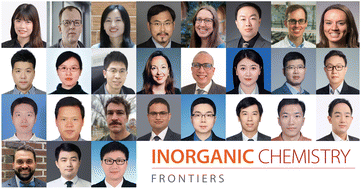
Inorg. Chem. Front., 2024,11, 2521-2526
https://doi.org/10.1039/D4QI90021A
Recent progress in the development of tin tungstate (α-SnWO4) photoanodes for solar water oxidation
Tin tungstate is an emerging complex oxide photoelectrode for solar water splitting. Here, recent developments in the material are thoroughly reviewed, summarizing its properties, different syntheses, limitations, modification strategies and outlook.

Inorg. Chem. Front., 2023,10, 7109-7125
https://doi.org/10.1039/D3QI01841E
Current progress in metal–organic frameworks and their derivatives for electrocatalytic water splitting
For electrocatalytic water splitting, MOFs can be optimized through structural modification, plane design and synergetic composite systems, and the annealing process further expands the types of MOF-based electrocatalytic materials.

Inorg. Chem. Front., 2023,10, 6489-6505
https://doi.org/10.1039/D3QI01468A
Recent progress and prospects of rare earth elements for advanced aqueous zinc batteries
We analyze the unique roles played by rare earth elements from the three perspectives of cathode, anode and electrolyte. We summarize their potential applications and rational optimization strategies towards electrodes, separators and electrolytes.
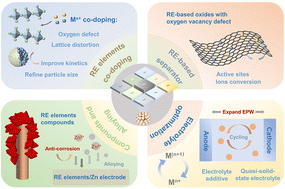
Inorg. Chem. Front., 2023,10, 5802-5811
https://doi.org/10.1039/D3QI01117H
Recent advances and strategies of electrocatalysts for large current density industrial hydrogen evolution reaction
The urgent demand for sustainable energy resources has boosted research into highly efficient electrocatalysts for the hydrogen evolution reaction (HER).
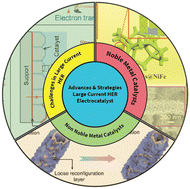
Inorg. Chem. Front., 2023,10, 4632-4649
https://doi.org/10.1039/D3QI00799E
N-heterocyclic carbene-ligated metal complexes and clusters for photocatalytic CO2 reduction
N-heterocyclic carbenes are structurally versatile ligands, which have strong σ-donor properties to form covalent bonds with metal centers. This frontier article provides a review on active NHC-stabilized metal complexes and clusters for photocatalytic CO2 reduction.
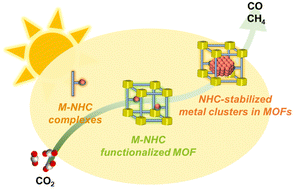
Inorg. Chem. Front., 2023,10, 4313-4321
https://doi.org/10.1039/D3QI00678F
Two solvent-dependent Al16 nanorings: design, synthesis and nonlinear optical limiting behavior
Presented herein is a study focusing on the effect of organic shell ligands on the configuration of the ring structure with the same nuclearity, and their photo-related applications, such as fluorescence and third-order nonlinear response.

Inorg. Chem. Front., 2024,11, 462-469
https://doi.org/10.1039/D3QI02008H
Divergent methods for polyester and polycarbonate depolymerization with a cobalt catalyst
Catalytic methods for the cyclodepolymerization and solvolysis of polyesters and polycarbonates have been realized with a molecular cobalt catalyst. Nascent strategies to modify these methods for use in mixed plastic waste streams are identified.

Inorg. Chem. Front., 2024,11, 298-309
https://doi.org/10.1039/D3QI01833D
Maximizing the catalytic performance of FER zeolite in the methanol-to-hydrocarbon process by manipulating the crystal size and constructing a bifunctional system
An unprecedented catalyst lifespan was accomplished with a preferential selectivity for C4–C7 hydrocarbons by combining Y2O3 with a unique flake-shaped FER zeolite with optimized physicochemical properties.

Inorg. Chem. Front., 2023,10, 6632-6645
https://doi.org/10.1039/D3QI01526B
Synthesis and reactivity of a uranium(IV) complex supported by a monoanionic nitrogen–phosphorus ligand
A monoanionic N–P ligand L3 with a pendant dimethylamino group was designed. Species with multiple U–C bonds—a rare example of a metallafluorene containing an actinide element—and clusters with multiple U–M bonds were isolated.
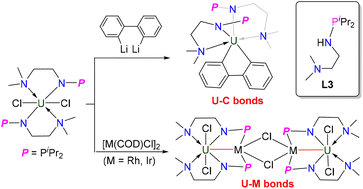
Inorg. Chem. Front., 2023,10, 5622-5633
https://doi.org/10.1039/D3QI01447A
From unprecedented 2,2′-bisimidazole-bridged rare earth organometallics to magnetic hysteresis in the dysprosium congener
A new series of bisimidazole-bridged rare earth metallocene complexes, [(Cp*2RE)2[μ-bim] (RE = Y, Gd, and Dy), was isolated and studied by crystallography, magnetometry, spectroscopy, and computations. The Dy congener is a single-molecule magnet.

Inorg. Chem. Front., 2023,10, 4981-4992
https://doi.org/10.1039/D3QI00546A
Spatial separation of photogenerated charges on the anisotropic facets of cuprous oxide
Anisotropic facet engineering is an intriguing way to regulate the charge-separation behavior on a semiconductor photocatalyst.
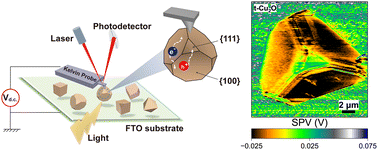
Inorg. Chem. Front., 2023,10, 3550-3557
https://doi.org/10.1039/D3QI00455D
Accelerated rates of proton coupled electron transfer to oxygen deficient polyoxovanadate–alkoxide clusters
The rate of O-atom defect formation on a reduced POV-alkoxide via PCET is accelerated despite weakened surface O–H bonds. Increased electron density and terminal V![[double bond, length as m-dash]](https://www.rsc.org/images/entities/char_e001.gif) O basicity break classical driving force/rate scaling relationships.
O basicity break classical driving force/rate scaling relationships.
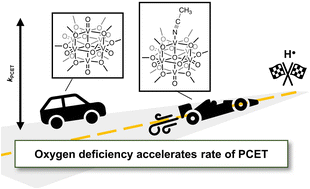
Inorg. Chem. Front., 2023,10, 2754-2765
https://doi.org/10.1039/D3QI00129F
P,N-type phosphaalkene-based Ir(I) complexes: synthesis, coordination chemistry, and catalytic applications
Iridium P,N phosphaalkene complexes show a rich coordination chemistry with unusual twofold C–H activation. The Ir(I) chloride complex can be applied for C–N coupling and alcohol upgrading reactions.

Inorg. Chem. Front., 2023,10, 2285-2293
https://doi.org/10.1039/D3QI00142C
Pyridyl-containing graphdiyne stabilizes sub-2 nm ultrasmall copper nanoclusters for the electrochemical reduction of CO2
Pyridyl-containing graphdiyne provides well-defined sites for stabilizing sub-2 nm copper nanoclusters, which show an optimum CH4 faradaic efficiency of 58% in the electrochemical CO2 reduction reaction.

Inorg. Chem. Front., 2023,10, 2189-2196
https://doi.org/10.1039/D2QI02671F
Topological control of metal–organic frameworks toward highly sensitive and selective detection of chromate and dichromate
A synthetic modulation approach has given rise to two topologically distinct thorium-based MOFs, whose polymorphism allows for elucidating how the structure of MOF, in isolation, influences the sensing efficacy of Cr(VI) oxyanions.
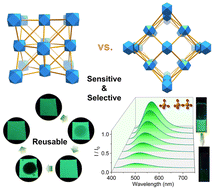
Inorg. Chem. Front., 2023,10, 1721-1730
https://doi.org/10.1039/D2QI02631G
The tail of imidazole regulated the assembly of two robust sandwich-type polyoxotungstate-based open frameworks with efficient visible-white-light-driven catalytic oxidation of sulfides
The tail of imidazole regulated the assembly of fascinating 2D sql topology and 3D 2-fold interpenetrated lvt structure polyoxotungstate-based open frameworks with efficient visible-white-light-driven aerobic catalytic oxidation of sulfides.

Inorg. Chem. Front., 2023,10, 1465-1474
https://doi.org/10.1039/D3QI00018D
Unveiling the nucleation and evolution of twinned intermetallic nanocrystals for CO-tolerant selective hydrogenation
The nucleation and dynamic evolution of twinned intermetallic nanocrystals are critical for regulating the interface structures and modulating the CO tolerant hydrogenation.

Inorg. Chem. Front., 2023,10, 1027-1036
https://doi.org/10.1039/D2QI02262A
Electrocatalytic hydrogen evolution reaction by a Ni(N2O2) complex based on 2,2′-bipyridine
A Ni complex containing a N2O2 ligand is active for the hydrogen evolution reaction. Mechanistic studies suggest the formation of hydrogen-bonded adducts facilitates hydride formation and near barrierless hydride protonation.
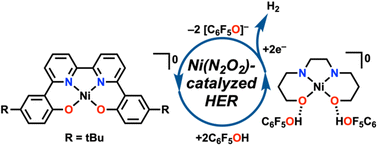
Inorg. Chem. Front., 2023,10, 972-978
https://doi.org/10.1039/D2QI01928K
Cation modified Fe–N–C catalyst for the electrochemical reduction of nitrate in solutions of low ionic strength
Cationic sites fixed on an Fe–N–C catalyst modulate the electric field in the double layer and facilitate electrochemical nitrate reduction to ammonia in solutions of ionic strength comparable to that of actual river water.
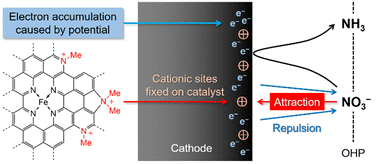
Inorg. Chem. Front., 2023,10, 942-951
https://doi.org/10.1039/D2QI02290G
A ferrocene-containing analogue of the MCU inhibitor Ru265 with increased cell permeability
An analogue of the mitochondrial calcium uniporter (MCU) inhibitor Ru265 containing axial ferrocenecarboxylate ligands is reported. This new complex exhibits enhanced cellular uptake compared to the parent compound Ru265.
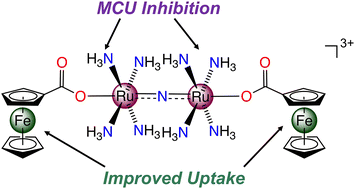
Inorg. Chem. Front., 2023,10, 591-599
https://doi.org/10.1039/D2QI02183H
Giant thermal expansion associated with a macroscopic polarization change in a single crystal of a Zn(II) complex
A crystal of Zn(II) complex shows temperature-dependent 10% contraction/expansion and a continuous pyroelectric current corresponding to a scissor motion of molecules.
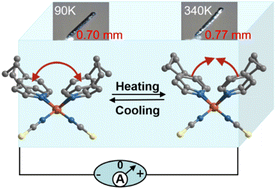
Inorg. Chem. Front., 2023,10, 692-698
https://doi.org/10.1039/D2QI02371G
Rational design of an organic–inorganic hybrid with Schiff base cations for an efficient quadratic nonlinear optical switch
By introducing conjugated aromatic Schiff base cations, we successfully obtained a novel organic–inorganic solid-state quadratic nonlinear optical switching material with a high operating temperature.
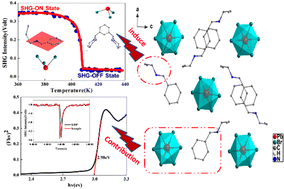
Inorg. Chem. Front., 2023,10, 435-442
https://doi.org/10.1039/D2QI02149H
Electrocatalytic production of hydrogen peroxide enabled by post-synthetic modification of a self-assembled porphyrin cube
A self-assembled porphyrin cube can be metalated/transmetalated to contain fourteen cobalt ions in two different environments. The Co(II) metalloporphyrin sites are electrocatalytically active to selectively generate hydrogen peroxide from oxygen.

Inorg. Chem. Front., 2023,10, 316-324
https://doi.org/10.1039/D2QI02050E
Enhancing photoluminescence efficiency of atomically precise copper(I) nanoclusters through a solvent-induced structural transformation
Atomically precise alkynyl-protected copper(I) nanoclusters (CuNCs) have been prepared, and they exhibit high phosphorescence quantum yield, short lifetime, and fast radiative decay rate, which are rarely observed in atomically precise CuNCs.
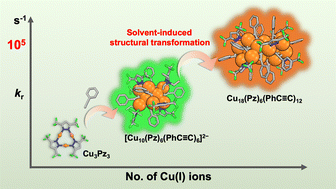
Inorg. Chem. Front., 2022,9, 5327-5334
https://doi.org/10.1039/D2QI01427K
A new boron cluster anion pillared metal organic framework with ligand inclusion and its selective acetylene capture properties
A novel microporous boron cluster pillared metal–organic framework BSF-10 was synthesized with ligand inclusion for efficient C2H2/CO2 and C2H2/C2H4 adsorption separation.
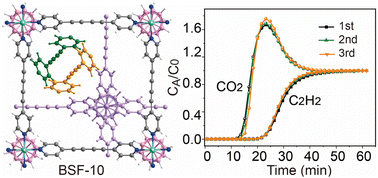
Inorg. Chem. Front., 2022,9, 5140-5147
https://doi.org/10.1039/D2QI00890D
“Breathing” organic cation to stabilize multiple structures in low-dimensional Ge-, Sn-, and Pb-based hybrid iodide perovskites
By using S-(2-aminoethyl)isothiouronium (ETU) as the templating cation, five new metal iodide hybrids, (ETU)GeI4, (ETU)4Ge5I18, (ETU)PbI4 and (ETU)3Pb2I10 are reported with varied C–S–C angles in the organic cation.
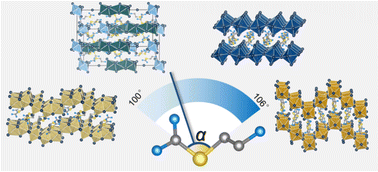
Inorg. Chem. Front., 2022,9, 4892-4898
https://doi.org/10.1039/D2QI01247B
The exploration of new infrared nonlinear optical crystals based on the polymorphism of BaGa4S7
Two new polymorphism of BaGa4S7 was successfully discovered and synthesized. Among them, β-BaGa4S7 exhibits the best balance among a large phase-matching SHG response and a wide band gap, as well as the stable physicochemical property.
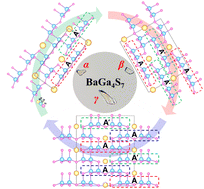
Inorg. Chem. Front., 2022,9, 4632-4641
https://doi.org/10.1039/D2QI01263D
About this collection
Inorganic Chemistry Frontiers is pleased to publish this Emerging Investigator Series to highlight early-career scientists and their excellent research at the forefront of inorganic chemistry.
Scientists featured in the collection are recognized for the high novelty of their research, their outstanding contributions made during independent career stages, as well as the potential to influence chemistry in future.
More details about the Emerging Investigator Series can be found below, including details on how to apply for considerations. This collection will be updated when new Emerging Investigator Series papers are published – so keep checking this page and watch the collection grow!
Check out the call for papers by Inorganic Chemistry Frontiers, Organic Chemistry Frontiers and Materials Chemistry Frontiers.
Read below the author profiles to know more about the emerging investigators.